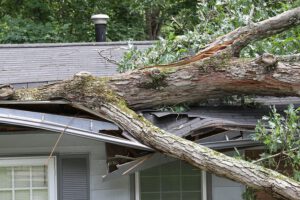The best way to deal with storm damage is to begin as soon as possible after the storm passes. The most important thing to do is remain calm and take care of yourself. The most important thing is to stay away from damaged homes as much as possible. You should also check for cracks and broken windows. If there are any, you should call your insurance company. In addition to your insurance, you should check your roof and siding for damage. The best way to determine how much damage was done to your property is to contact a reputable contractor.
 If you are dealing with storm damage, you should be prepared to provide your insurance company with all necessary documents. It is essential to keep all receipts for repairs. Many insurance policies cover storm damage expenses. The coverage varies based on your policy, your age, and the location of your property. To find out if you are covered, contact your insurance provider. You should also check your deductible. Once you’ve received your claim, you’ll be ready to contact a roofer.
If you are dealing with storm damage, you should be prepared to provide your insurance company with all necessary documents. It is essential to keep all receipts for repairs. Many insurance policies cover storm damage expenses. The coverage varies based on your policy, your age, and the location of your property. To find out if you are covered, contact your insurance provider. You should also check your deductible. Once you’ve received your claim, you’ll be ready to contact a roofer.
Once you’ve decided to work with a roofing contractor, document everything. Ask the contractor to save all of the invoices and receipts, including the price of the materials. When filing a storm damage insurance claim, be sure to keep all receipts for the work performed on your property. Most insurance policies will cover a portion of storm-related expenses, depending on the type of policy you have and the age of your roof. Make sure to contact your insurance company to find out if the storm damage is covered and what your deductible will be.
When filing an insurance claim, it is important to be thorough and detailed. It is also important to be aware of any time limits imposed by your insurance carrier. Generally, a storm damage claim must be filed within a year. However, depending on your policy, you may have as long as six months to file your claim. When a storm occurs, it is important to contact your insurance company as soon as possible. The sooner you file a storm damage claim, the easier it will be for you to get the proper compensation.
After a storm, homeowners should document the damage and keep receipts. Most insurance policies will cover roof and siding repair and replacement. In addition to preserving receipts, it is important to document the damage in the home with photographs. A storm is a perfect opportunity to show the extent of your insurance claim. Whether you choose a professional roofer or a DIY approach, be sure to keep track of everything. If a roofing contractor does the work, you will be able to get the proper payment from your insurance company.
After a storm, it’s important to document the damage. Make sure you keep receipts of the work. If you need to hire a roofer to repair your home, make sure you ask for local references and a local insurance agent. If they don’t know your area, consider hiring a roofing company instead. Your insurance company will cover the cost of roofing and another repair. But if you’re not sure about what to do next, don’t be afraid to call your roofer.
Once you’ve inspected the roof covering, you should contact your insurance provider to get an estimate of the cost of the work. You should also keep the receipts from any roofing work. Depending on the type of insurance, your insurance carrier may be willing to cover some or all of these expenses. As a homeowner, you should ask your insurance provider about storm damage coverage before you start work on your home. If you’re concerned about the cost, it’s best to hire a qualified roofing storm damage contractor.
If you live in a storm-prone area, you should always hire a roofing company. These contractors can assess the damages and offer solutions to repair your home. In addition, they can work with your insurance company. If they can’t help you, ask them to contact your insurance company. They can handle the claims process and will ensure you get the best deal possible. But it’s also important to keep track of the receipts. If your roof has been damaged, make sure it’s covered. If not, you’ll have to pay a lot more than what your insurance policy pays.
